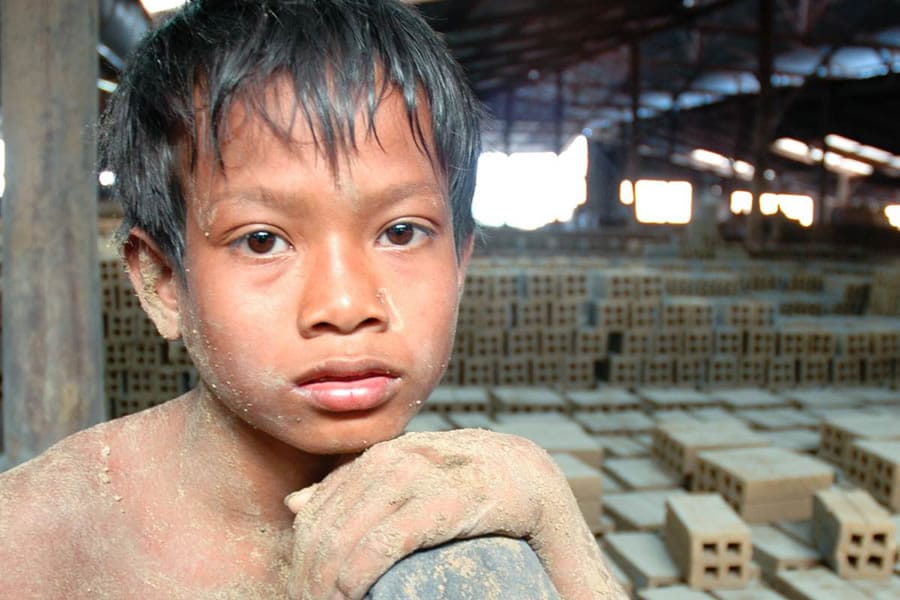
Scales of contemporary human trafficking Essay
The exact number of modern slaves in the world is unknown. According to various sources, about 700-900 thousand people become enslaved every year. According to estimates of Human Security Center, up to 4 million people are sold into slavery each year.
International Labour Organization in 2006 published a report telling that 12.3 million people in the world are engaged into forced (that is, in fact, slavery) labor. There are even more shocking assessment. The experts of Anti-Slavery organization state that the number of slaves in the modern world reaches 200 million people (Goodey, 2008).
According to the UN estimates, people are sold into slavery (kidnapped, lured by deception, etc.) in 127 countries of the world; foreign victims of human traffickers are exploited in 137 countries. Eleven countries are marked as having a “very high” level of activity of kidnappers, including Russia, Ukraine, Belarus, Moldova and Lithuania. In Armenia, Georgia, Kazakhstan and Uzbekistan this level is marked as “high”. Ten counties are the favorite places of dispatch of modern-day slaves, including the U.S., Israel, Turkey, Italy, Japan, Germany, and Greece (Shelley, 2010; Smith, 2011).
For example, according to estimates of the International Organization for Migration in 2005, in Belarus, Bulgaria, Moldova, Romania and Ukraine 225 thousand people get trapped by slave traders every year.
For example, in Niger, the main mediators in the slave trade are the Tuaregs. According to the Timidria organization, in 2003,870 000 people were in slavery in Niger. In Central and Eastern Europe each year about 200 thousand people do not return home, and most of them are women exported abroad with the purpose of sexual exploitation.
In the Netherlands from 1000 up to 1700 victims of sexual slavery are registered each year. In 2008 763 women from Hungary were registered there, 60% of whom were involved in forced prostitution. In Greece, according to experts, there are 13 000 – 14 000 victims from Nigeria, Albania and the CIS countries. In Spain, in 2007, were officially registered 1035 victims of such slavery (Quirk, 2007; Goodey, 2008).
Sex slavery has been registered in Sudan, Liberia, Sierra Leone, Uganda, Congo, Niger and Mauritania. In Ghana, Togo and Benin there is a form of religious prostitution, when thousands of women are involved in sexual relationships with the “gods”, whose role is performed by priests. Commercial exploitation of child sexuality is also a common form of sexual slavery. According to Indian police, more than 1.2 million children are caught for prostitution in this country. About 40% of Indian prostitutes are children and adolescents. A similar situation (40% involved in prostitution are child-age) is in Thailand (Kara, 2010).
In general, according to estimates of the International Organization for Migration, 5.7 million children are victims of forced and bonded labor, and another 1.2 million children are victims of trafficking. Every year one million children, mostly girls, are forced into prostitution. These girls are sold as sex slaves or used in the production of pornography. There were cases where children were used as donors of human organs and tissue for illegal operations. Currently, approximately 300 thousand children used as soldiers in approximately 30 conflict zones around the world. Many abducted girls turning into soldiers are also turned into sexual slaves (Weissbrodt, 2008; Shelley, 2010).
However, slavery in the traditional sense, and modern slavery vary considerably. In the “classical” slavery, a slaveholder had a legal right to the slave who was regarded as chattels. This, in turn, provided a sufficiently high price of slaves, which did not allow obtaining extremely high profit from using the slave.
The “new” slavery has no legal basis – it is forbidden in all countries. The cost of a slave has dropped considerably. In some countries a slave can be bought for less than 100 dollars or exchanged for a goat. According to the Free the Slaves organization, in 1850 in the American South the average slave was sold for an amount equal to modern 40 thousand dollars; now a slave there can be ”bought” for 120 dollars, which brings the slave owners a significant profit (Batstone, 2010).
The UN estimates that human traffickers (including contemporary slaveholders and smugglers helping illegal immigrants to move to other countries) earn more than 7 billion dollars (this figure includes only the income earned from the sale and resale of people, excluding the revenues brought by slaves to their masters). The U.S. State Department claims that the underground slave trade is the third most profitable criminal business in the world (yielding to only to arms trafficking and drug sale), its revenues reach 32 billion dollars a year (Smith, 2011).

